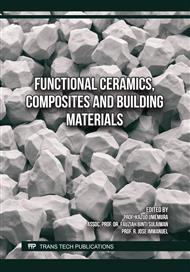p.29
p.41
p.49
p.55
p.61
p.71
p.77
p.87
p.99
Experimental Study on the Partial Replacement of Fine Aggregate with Cashew Nutshell Ash in Concrete
Abstract:
In this paper the utilization of cashew nutshell ash as a partial replacement of fine aggregate in concrete. The aim was experimentally analyze the strength and durability properties of concrete with the incorporation cashew nutshell ash and comparing it with conventional concrete mix. In this cashew nutshell ash us added to 0%, 5%, 10%, 15%, 20%, 25% and 30% in M25 grade of concrete with water cement ratio 0.45. The fresh and harden concrete properties was tested for slump test, compaction factor test, while the harden concrete for compressive strength, split tensile, rapid chloride permeability test and water absorption ,coefficient of water absorption and sorptivity for various replacement levels at the age 28 days, 180 days and 365 days determined. The experimental test results show that optimum replacement level of 25 % with weight of fine aggregate. Further then increasing replacement level of fine aggregate strength will be decreased.
Info:
Periodical:
Pages:
77-86
Citation:
Online since:
March 2025
Authors:
Keywords:
Price:
Сopyright:
© 2025 Trans Tech Publications Ltd. All Rights Reserved
Share:
Citation:



